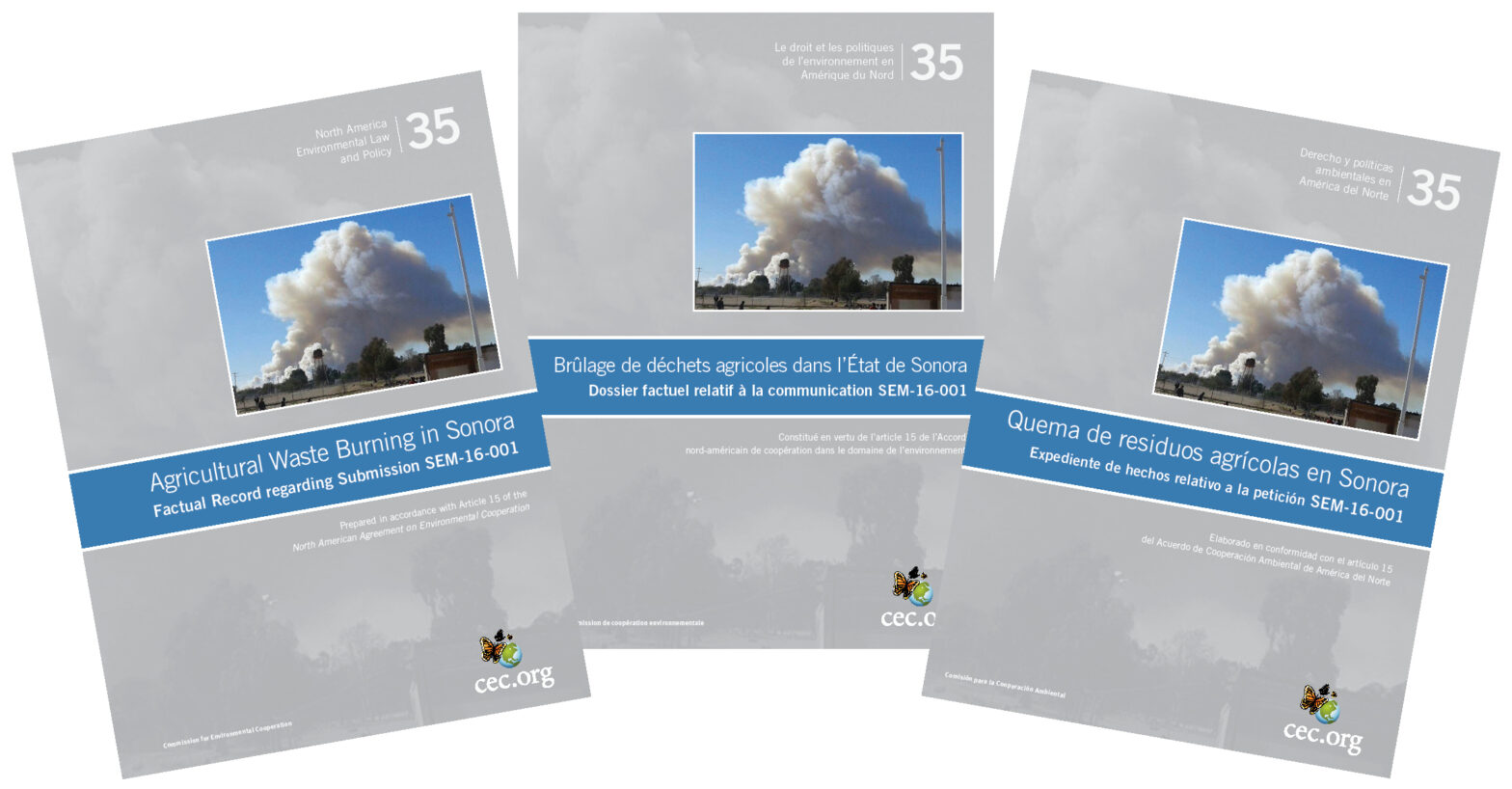CEC Council Votes for the Publication of the Agricultural Burning in Sonora Factual Record
Montreal, 20 September 2018—The Council of the Commission for Environmental Cooperation (CEC) voted unanimously to instruct the CEC Secretariat to publish the factual record—available in English, Spanish and French—with regard to Submission SEM-16-001 (Agricultural Burning in Sonora). The Submission asserts that Mexico is failing to effectively enforce provisions of the Environmental Protection Regulation (Reglamento de Equilibrio Ecológico y Protección al Medio Ambiente—REEPMA) of the Municipality of Caborca, Sonora. The Submitter contends that approximately 100 tons of asparagus crop residues, covering some 13,000 hectares of cropland near the Municipality of Caborca, Sonora are burned each year.
In addition to discussing the harvesting methods for the asparagus crop and the asparagus burning practices followed in the Caborca region, the factual record provides information on the implementation of air quality measurement systems and corresponding actions, the implementation of measures to control air pollution from agricultural burning, the issuance of crop residue burning permits, and the alleged harm to public health and incidence of respiratory diseases occurring during open-air burning of the crop residue in the Caborca area.
Globally, Mexico is the third-largest grower of asparagus, with some 170,000 tons produced annually. Approximately 50 percent of Mexico's crop is grown in Sonora, and three-quarters of that comes from the Municipality of Caborca.
The purpose of a factual record is to provide an objective presentation of the facts relevant to assertions set forth in a submission under Article 14 of the North American Agreement on Environmental Cooperation (NAAEC), and to allow readers to draw their own conclusions regarding a Party’s environmental law enforcement. Although a factual record does not contain recommendations, it is expected to outline the general history of the environmental enforcement issue raised in the submission, the relevant legal obligations of the Party, and the actions of the Party in fulfilling those obligations, thus serving as a valuable information-sharing tool under the NAAEC.
For further information, please visit the CEC Submissions on Enforcement Matters website. For media inquiries, please contact Barbara Robinson at comms@cec.org.

About the CEC
The Commission for Environmental Cooperation (CEC) was established in 1994 by the governments of Canada, Mexico and the United States through the North American Agreement on Environmental Cooperation, a parallel environmental agreement to NAFTA. As of 2020, the CEC is recognized and maintained by the Environmental Cooperation Agreement, in parallel with the new Free Trade Agreement of North America. The CEC brings together a wide range of stakeholders, including the general public, Indigenous people, youth, nongovernmental organizations, academia, and the business sector, to seek solutions to protect North America’s shared environment while supporting sustainable development for the benefit of present and future generations
The CEC is governed and funded equally by the Government of Canada through Environment and Climate Change Canada, the Government of the United States of Mexico through the Secretaría de Medio Ambiente y Recursos Naturales, and the Government of the United States of America through the Environmental Protection Agency.